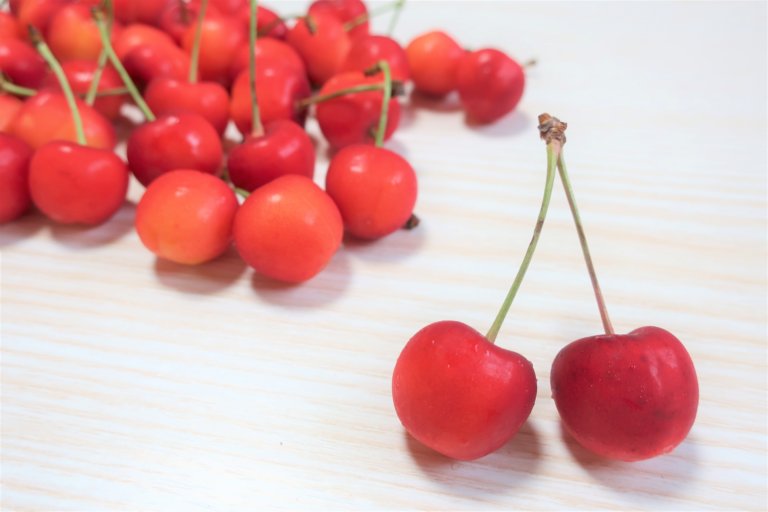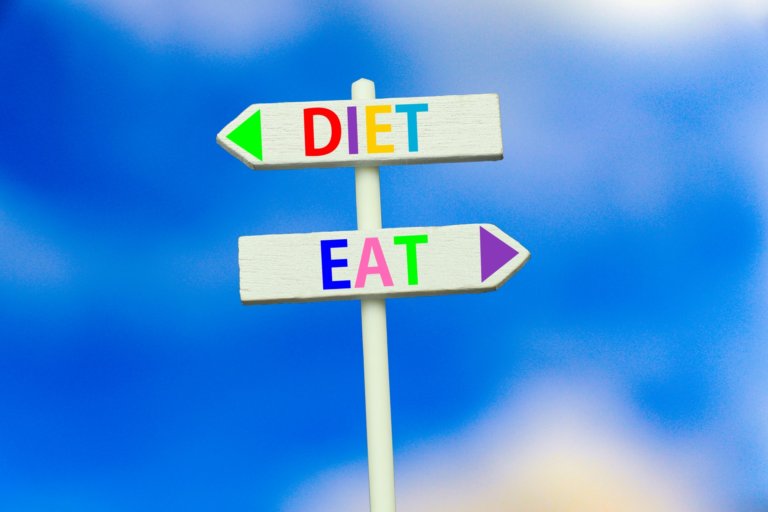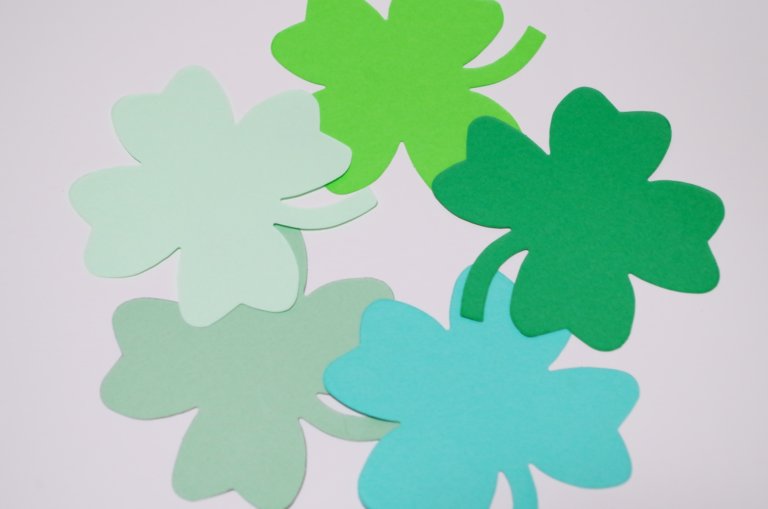What are the benefits of cherries? Does it help with weight loss? Types, nutrition and benefits.
2025/03/07 This site contains advertisements. Category: Special-feature

Cherries are attractive for their sweet and sour taste and pretty appearance, but did you know that they are actually very rich in nutrients?
Cherries are not only delicious, but also have many benefits when eaten.
This article will detail the various nutrients found in cherries and the benefits of eating them.
There are also rumors that cherries are “good for weight loss,” but is that true? We will also explain the various effects of cherries, so please refer to this page if you are interested in the various effects of cherries.
Types of cherries

It is said that there are actually more than 1,000 varieties of cherries worldwide.
“Sato Nishiki” is very famous in Japan, but different types of cherries have different grain sizes and colors.
Here are some of the types of cherries you can buy in Japan.
Sato Nishiki
Sato Nishiki is one of Japan’s representative varieties, and is the country’s number one cherry in terms of both production and name recognition.
They are also called “the king of cherries.”
Higashine City in Yamagata Prefecture is the birthplace of Sato Nishiki, and the largest producer in Japan.
Sato Nishiki is soft and smooth and has a very beautiful appearance.
It is characterized by a very high sugar content, low acidity, and a well-balanced flavor that suits Japanese tastes.
Sato Nishiki is also very popular as a gift, and many people have probably given it to their mothers on “Mother’s Day”.
The season is from mid-June to late June.
The size is about 6 grams, but recently, large-sized ones are also being grown.
Benishuho
Benishuho has a crispy texture when chewed, and is characterized by its large size (8 to 9 grams), which makes it quite filling.
Higashine City in Yamagata Prefecture is the birthplace of this product, and its production is the largest in Japan.
The taste is characterized by low acidity and a mouthfeel that is sweeter than the sugar content.
The flesh is cream-colored and firm, making these cherries relatively long-lived.
It is a late variety that can be harvested from late June to about mid-July.
Yutakanishiki
Yutakanishiki is one of the rarer varieties, and many people may not be familiar with it.
Toyonishiki’s skin is a very bright red color, and its size is about the same as Sato Nishiki at about 6 grams.
The taste is moderately sweet with little acidity.
It is very soft to the touch and texture, and has a juicy flavor due to its very high juice content.
Yutakanishiki is an early variety, so it comes into season in late May.
Benitemari
Like Benishuho, Benitemari is characterized by its large berries, which average about 10 grams in weight and are quite large and satisfying to eat.
It is sweet and very juicy with a sugar content of over 20 degrees.
They are also used for gift because of their firm pulp and relatively long shelf life.
Benitemari is also a rare variety that is rarely seen on the market.
Like Benishuho, it is a late variety, so it is harvested from early July to mid-July.
Gassan Nishiki
Gassan Nishiki is a variety that was born in Dalian, China and brought to Japan.
The rind is yellow in color and each fruit weighs around 10 grams, making it a very large fruit.
The pulp is firm, with high sugar content and low acidity, resulting in a strong sweetness.
The season is from mid-June to mid-July.
Gassan Nishiki is also a rare variety, so you may not find it in the market.
American cherry
American cherry is actually a generic term for cherries imported from the United States.
Most imported cherries are called “American cherries” because they are grown in the United States.
The most representative variety of American cherries is the “Bing” variety, which is characterized by its large pulp and strong acidity and sweetness.
The flesh is dark reddish purple in color and the juice is also reddish purple.
California-grown ones arrive in Japan in early May, followed by Washington and Oregon-grown ones from mid-June, and the season continues until around late July.
What nutrients are found in cherries?

Cherries are sweet and delicious, but many people may eat them without thinking about their nutritional benefits.
But in fact, cherries are rich in nutrients, with potassium and iron levels among the highest of any fruit.
Let’s review some of the “nutrients” contained in cherries that may surprise you.
First of all, cherries are rich in carbohydrates, but they are also rich in vitamins, potassium, and other nutrients.
The following table summarizes the most abundant nutrients found per 100 g of cherries.
| potassium (K) | 210 mg |
|---|---|
| calcium (Ca) | 13 mg |
| iron (content) | 0.3 mg |
| pantothenic acid | 0.24 mg |
| vitamin E | 0.5 mg |
| vitamin C | 10mg |
| folic acid | 38 μg |
| dietary fiber | 1.2g |
◆Data citation: “Standard Tables of Food Composition in Japan,” Ministry of Education, Culture, Sports, Science and Technology
Especially striking is the high amount of “potassium!
Potassium is an excellent nutrient because of its ability to regulate salt in the body, which is said to help lower blood pressure and prevent strokes.
It also contains antioxidant vitamins C and E, as well as pantothenic acid, which helps vitamin C function, making it a great source of nutrients for those concerned about skin beauty.
What benefits can be expected from cherries?

Now that we know that cherries are rich in potassium, iron, vitamins, and other nutrients, you may be wondering what benefits you can actually expect from eating them!
Cherries are very good for beauty because they are rich in vitamins, but they actually have many other benefits as well.
Let’s review the benefits of cherries in turn!
Recovery from fatigue
Cherries are rich in iron, vitamins, and carotene, which are good for relieving fatigue.
Iron can help with anemia, and vitamins and carotene can boost the immune system.
Since cherries contain various ingredients in good balance, they are recommended not only for relieving fatigue, but also for those who are concerned about tired eyes and rough skin!
Prevention of high blood pressure and swelling
Potassium, which is particularly abundant in cherries, has a salt-regulating function and is said to help lower blood pressure.
In addition, cherries also contain aspartic acid, which has diuretic properties, and is effective in reducing swelling of the face and feet.
If you are concerned about high blood pressure or swelling of the face and feet, eat positively.
Prevention of anemia and cold
As mentioned earlier, cherries contain high iron content, which can be expected to prevent anemia.
In addition to iron, folic acid and copper, which are abundant in cherries, are also said to be good for cooling.
In addition, cherries contain high levels of potassium, which improves blood circulation, so while many fruits are cooling to the body, cherries also have a “warming” effect.
Folic acid is a component that helps the growth of the baby in the belly, so it is recommended for pregnant women, and it is a fruit that women who are concerned about coldness and anemia should actively consume!
Cavity prevention
Cherries contain sorbitol, an ingredient known to prevent tooth decay.
Sorbitol is a sweetener, but unlike other sugars, it is not easily fermented by bacteria in the mouth.
Cherries also contain other nutrients such as calcium, iron, and phosphorus, which are necessary to strengthen teeth and bones, helping to strengthen teeth while preventing cavities!
Are cherries good for weight loss? What are the calories of concern?

We have looked in detail at the nutrients in cherries, but how many calories are in cherries?
We see information on the Internet that says it is good for weight loss, but let’s check out the details of why it is good for weight loss!
How many calories in cherries? How do they compare to other fruits?
The calorie content of cherries is 60 kcal per 100 g of edible portion.
Assuming that cherries average approximately 8 to 9 grams each, calculating based on the edible portion, about 20 cherries would be 100 grams, which means that eating 20 cherries would have 60 kcal.
It is difficult to tell by looking at calories alone, so let’s compare it to other fruits.
| Fruit name | Calories (per 100g edible portion) |
|---|---|
| cherry | 60 kcal |
| banana | 86 kcal |
| apple | 57 kcal |
| melon | 42 kcal |
| peach | 40 kcal |
| orange | 45 kcal |
| strawberry | 34 kcal |
◆Data citation: “Standard Tables of Food Composition in Japan,” Ministry of Education, Culture, Sports, Science and Technology
Looking at the calories above, we can see that cherries have more calories than other fruits.
So, if I eat cherries, won’t I gain weight, not just lose it? Some people may say, “Well, then, if I eat cherries, I will gain weight, not just lose weight.
However, the table above shows the calories from eating approximately 20 cherries.
It is not often that we eat 20 cherries at a time.
Also, even if the calories are a little higher, cherries contain mostly water, with the rest being sugar (carbohydrates).
Unlike the glucose contained in sweets, the sugar in fruits is fructose, which has a moderate rate of increase in blood glucose levels, so it is said that eating fruits does not make you gain weight.
Sweets are fattening because they contain high amounts of fat and other fattening substances in addition to glucose, which is quickly replaced by energy, even though they have the same calories.
Incidentally, eating 100 g of shortcake amounts to a whopping 327 kcal!
A 100 g serving of cherries has 60 kcal, so that’s five times as many calories as a 100 g serving of cherries.
It is true that cherries have slightly more calories than strawberries and oranges, but they are much lower in calories and less fattening than sweets!
Are cherries good for weight loss?
We found that although the calorie content of cherries is high among fruits, they are much less fattening than sweets.
So is it true that it is good for “dieting”?
In conclusion, we can say that cherries are more “diet-suitable” than “diet-helpful.
The first thing to note about why it helps with weight loss is the anthocyanin component in cherries.
Anthocyanins also have antioxidant properties and slow the rise in blood sugar levels by suppressing enzyme activity, so the body is less likely to store energy.
In addition, the vitamins C and E in cherries, as well as minerals such as calcium, iron, phosphorus, and potassium, help to increase metabolism.
In addition, potassium has the function of regulating salt function and diuresis, which also helps with body swelling.
As you can see, cherries contain a variety of ingredients that can help you lose weight, so eating cherries as a snack instead of sweets is highly recommended!
However, cherries contain “sorbitol,” which can cause stomach upset if eaten in excess.
Also, even though they are called cherries, canned cherries contain a lot of sugar and should not be eaten on a diet.
How to choose cherries well: 5 points to consider

Then, when you actually buy cherries at the store, you also want to know how to tell what kind of cherries are good!
There are two types of cherries available in Japan, domestically produced and imported, and the selection process is basically the same for both.
Let’s check out how to select cherries that are tasty and in good condition!
No scratches or discoloration.
First, choose cherries that have no blemishes or discoloration.
Scratched or discolored cherries, like other fruits and vegetables, are very easily damaged.
Cherries are particularly susceptible to deterioration, so be sure to select cherries that are clean and blemish-free in appearance.
The grains should be firm and shiny.
Select cherries that have not only blemishes but also bouncy and shiny grains.
Cherries that are firm, glossy and beautiful looking are a sign of sweetness and good taste.
Cherries that are somewhat lack of firmness and wilted have lost their freshness and should not be selected.
Large grains
If the price is the same, choose larger-grained cherries.
Large-grained cherries are full of juice and have thick pulp, making them very juicy and delicious.
If possible, we recommend choosing cherries with large berries and a feeling of elasticity.
Whole grains are red
Select cherries with the entire grain as red as possible.
Some varieties of cherries turn darker as they ripen, so cherries that are as red and brightly colored as possible are in good condition.
Some cherries that still have a yellowish color are often found in stores, but if you have to choose, select cherries that have a lot of red grains.
Green shaft
Select cherries with green stems whenever possible.
The “axis” is the branch part of the cherry.
Cherries with green stems are very fresh, but if the stems are wilted, dark and withered, they may have been picked too long and are no longer fresh.
Many people may not check the cherries all the way down to the stem, but be sure to check the stem as well as the fruit of the cherry carefully.
How to keep cherries tasty

Cherries do not keep well and are very difficult to store.
Since cherries are only available for a short period of time, we would like to eat them in good condition if possible.
Keep in mind how to store cherries well so that they can be eaten in good condition.
Storage Method
Cherries are susceptible to temperature changes, condensation and dryness, and should basically be stored at room temperature.
If you buy them directly from the producing area or by mail order, they may arrive at your home refrigerated. In that case, wipe off any moisture on the cherries, wrap them in something absorbent to keep them from drying out, place them in Tupperware or other containers, and store them in the vegetable room as soon as possible.
It is recommended to eat them fresh, but they can also be frozen.
For freezing
Rinse the cherries with water to avoid damaging them, drain them, and freeze them in a Ziploc for long-term storage.
It is important to thoroughly wipe off the water.
They can be frozen for up to a month, but should be eaten as soon as possible if possible.
How to eat after thawing
Frozen cherries will become watery when completely thawed.
Therefore, it is best to leave it at room temperature to thaw and eat it in a semi-thawed sorbet state.
If the cherries are lightly cooked in syrup before freezing, they can also be eaten as a delicious dessert after thawing.
Retention period
Cherries are very delicate, easily deteriorate, and do not last long, so they should be eaten the same day they are purchased and should not be stored for more than three days.
If you cannot eat it within 3 days, you can freeze it.
summary
Cherries contain many nutrients that are beneficial to the body.
The high potassium content in cherries helps prevent blood pressure and swelling, while vitamins C and E help prevent rough skin.
Although cherries have slightly more calories than other fruits, they are much lower in calories than sweets, and they also contain ingredients that reduce blood sugar spikes and improve metabolism, making them a fruit that can help you lose weight.
However, be careful not to eat too much, as it may upset your stomach.


![[Tendo City, Yamagata] Takeisao Shrine, dedicated to Oda Nobunaga | Goshuin and Konpeito Worship Report アイキャッチ](https://bongheiberg.yamagata.jp/wp-content/uploads/2025/07/image6.jpg)
![[Takahata, Yamagata] Experience Uriwari Rock Garden Park アイキャッチ](https://bongheiberg.yamagata.jp/wp-content/uploads/2025/07/IMG_3542-scaled.jpg)
![[Asahi Town, Yamagata] Visiting Air Shrine | A Mysterious Spot Enshrining Air アイキャッチ](https://bongheiberg.yamagata.jp/wp-content/uploads/2025/07/IMG_3602-scaled.jpg)

